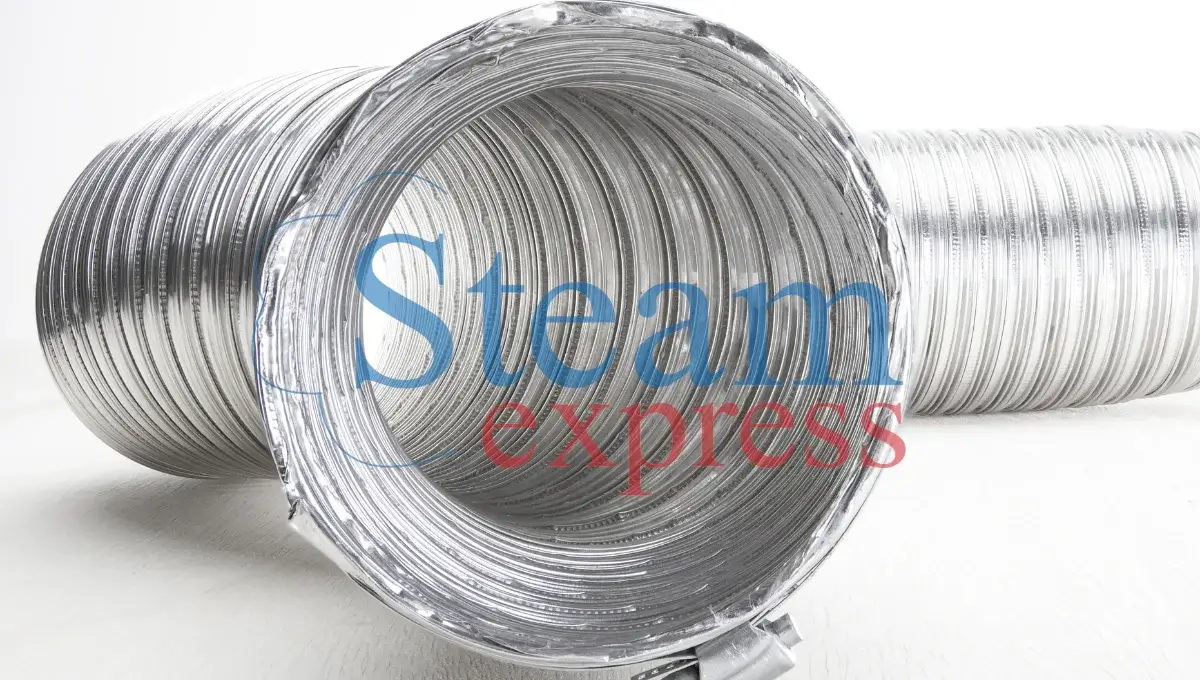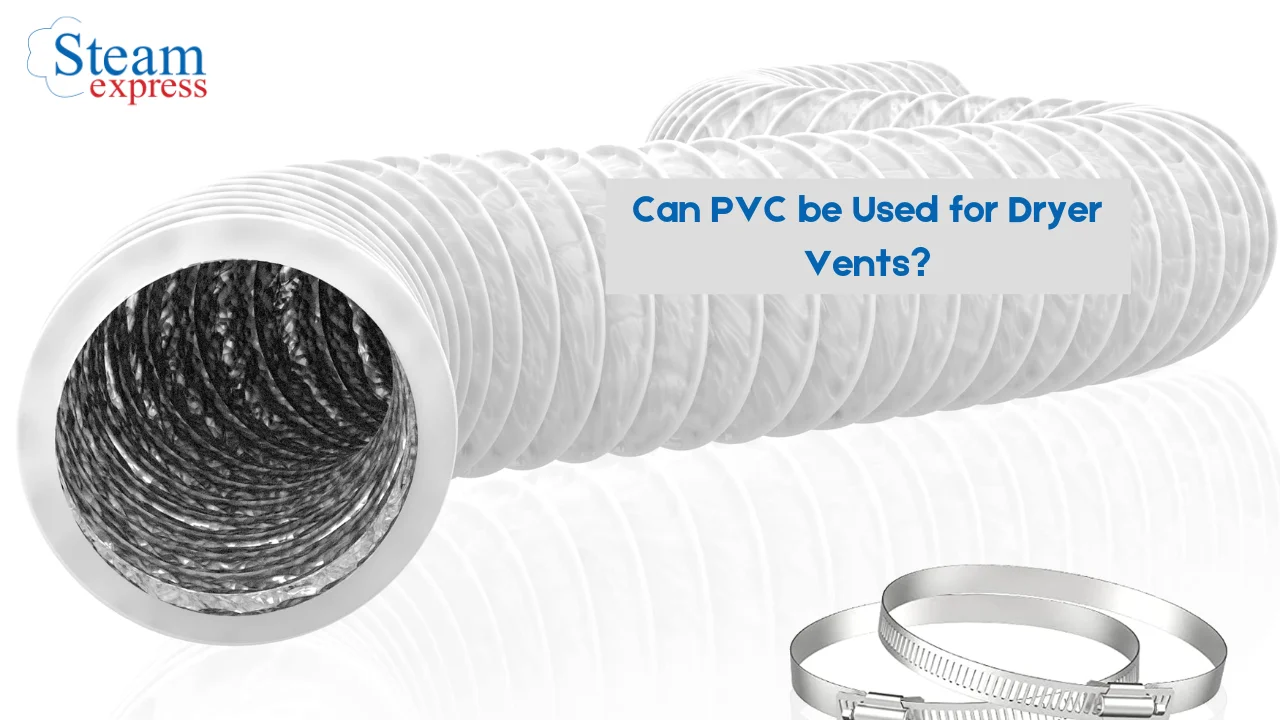When it comes to dryer vent installation, some DIYers or handymen might reach for readily available PVC pipe. But hold on! Before you connect your dryer with a PVC vent, let’s understand why PVC is not the best choice for this important household task.
So, can PVC be Used for Dryer Vents? In short, no, you shouldn’t use PVC for dryer vents because —
- it can’t handle the high heat,
- it creates static electricity,
- and it’s against building codes.
Instead, use smooth rigid metal ducts like aluminum or steel, which are safer and won’t accumulate lint.
Let’s get into the details of this topic further.
Why PVC Seems Attractive
PVC pipes are commonly used for plumbing and other household applications. They’re lightweight, durable, and relatively inexpensive.
Because of these qualities, some people might consider using PVC for the dryer vent pipe.
Why PVC is a Bad Choice for Dryer Vents
PVC pipes are great for lots of things, even used for duct and venting applications, sometimes. But there are reasons why they’re not good for dryer vents.
- PVC can’t handle high temperatures well; it starts getting affected around 140 degrees Fahrenheit. However, dryers produce much hotter air, which can damage PVC pipes over time, which finally causes blockages and safety issues.
- PVC is like a magnet for lint because it creates static electricity. This means lint sticks to the walls of the PVC pipe, clogging it up and making your dryer less efficient.

It can also make your dryer work harder, costing you more money in energy bills and causing more wear and tear.
- Unlike other materials, PVC doesn’t have weak spots where lint can escape if there’s a clog. So, there are the chances of potential hazards like overheating and water pooling.
- Most places have rules against using PVC for dryer vents. If you ignore these rules, it could cause problems when you try to sell your home or get insurance later on.
Then, What’s the Solution?
Here are the recommended materials for dryer vents:
- Rigid Metal Ducting: This is the gold standard for dryer vents. Galvanized steel or aluminum are popular choices. These offer durability, heat resistance, and smooth surfaces while minimizing lint buildup.
- ULC Listed Flexible Metal Vent: While not as ideal as rigid metal, some Underwriters Laboratories Listed (ULC) flexible metal vents are approved for dryer applications. These vents are typically shorter runs and should be checked regularly for signs of wear or damage.
Visit our informative blog to learn what happens if you can’t vent your dryer outside.
Materials to Avoid
Here are the materials you should avoid when setting up your dryer vent:
- Plastic Ducts: Stay away from plastic ducts like PVC. They can melt or catch fire because they can’t handle the high heat from dryers, which ultimately makes them dangerous.
- Foil or Vinyl Ducts: Avoid using foil or vinyl ducts too. They can easily get squashed or bent, causing airflow problems and more lint buildup.
- Non-listed Flexible Ducts: Don’t use flexible ducts that don’t have a UL listing or similar certification. They might not meet the safety standards required, so it’s better to steer clear of them.
Visit our insightful blog to get the right answer to your question, “How often should condo dryer vents be cleaned?”
When to Call a Professional
If you’re unsure about the condition of your dryer vent or what material to use for replacement, it’s always best to call a qualified dryer vent cleaning technician. They can —
- inspect your existing vent,
- recommend the best course of action,
- and ensure your dryer vents are cleaned and installed properly to maximize safety and efficiency.
You can contact Steam Express for any suggestion or effective solution regarding dryer vent installation, repair, and cleaning in Houston, Texas. Our team is licensed and insured, plus we guarantee thorough cleaning to enhance dryer efficiency and safety.
With our eco-friendly methods and advanced tools, we confirm the complete removal of lint and debris. Enjoy our budget-friendly rates, best price guarantee, and friendly service.
No matter if you need installation, repair, or cleaning, keep your trust in Steam Express for a cleaner, safer home. Contact us now for expert help and peace of mind.
Visit our informative blog to learn, “Are indoor dryer vents safe?”
Wrapping Up
To wrap up, PVC isn’t safe for dryer vents because it can’t handle high heat and collects lint easily. Using smooth metal ducts is better as they keep air flowing well, lowering the chance of fires and making dryers work better.
So, when picking your dryer vent material, remember the question: “Can PVC be Used for a Dryer Vent?” Then, make a smart choice for a safer and better-working setup.
FAQs
What size pipe is suitable for a dryer vent?
The recommended size pipe for a dryer vent is 4 inches in diameter. This applies to both rigid metal and flexible metal ducts.
What type of pipe is used for dryer vents?
Rigid metal is the best choice for dryer vents due to its fire resistance and smooth interior.
Can I reuse my existing dryer vent hose?
Inspect it for damage and clogs. Replace if ripped, excessively crushed, or heavily clogged.
How often should I clean my dryer vent?
Ideally, you should clean your dryer vent annually for optimal performance and safety. Though it varies based on the usage.
What are the signs of a clogged dryer vent?
Long drying times, hot dryer exterior, burning smell, or lint buildup around the vent exit.
Can I vent my dryer outdoors through a window?
Not recommended. It restricts airflow, creates condensation issues, and might violate building codes.
Are there any dryer vent maintenance tips?
Regularly clean the lint trap after every drying cycle, avoid long vent runs with excessive bends, and keep the dryer vent area clear of debris.


